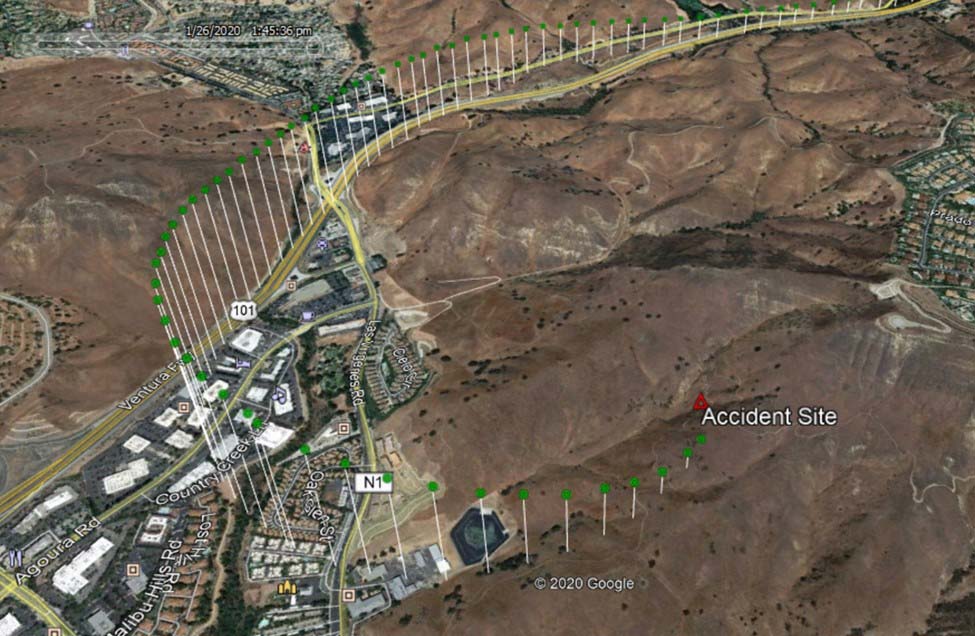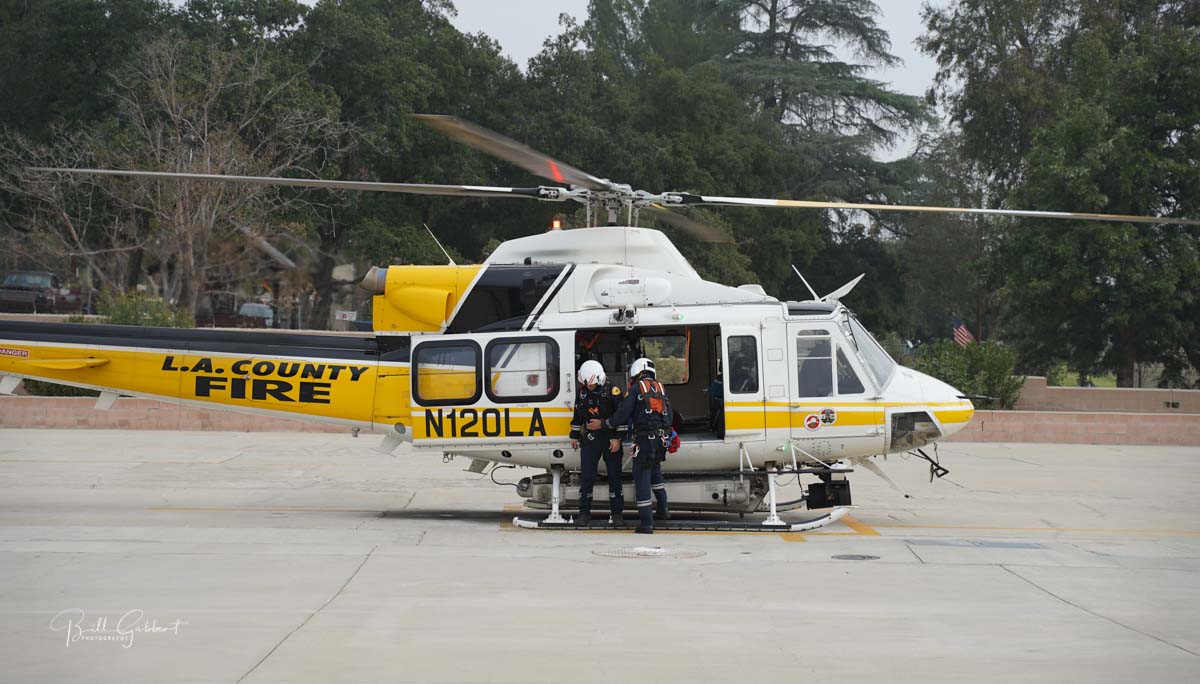
A report released today by the National Transportation Safety board during a public meeting revealed the agency believes the crash that killed basketball star Kobe Bryant and eight other people January 26, 2020 resulted from poor decision making and spatial disorientation. The pilot’s decision to continue flight under visual flight rules into instrument meteorological conditions, which resulted in the pilot’s spatial disorientation and loss of control, led to the crash of a Sikorsky S-76B helicopter (N72EX) in Calabasas, California.
In addition to Mr. Bryant, others killed in the crash included his 13-year old daughter, the pilot, and seven others, players, coaches, and parents, who were en route to a basketball game at the Mamba Academy in nearby Thousand Oaks.
The nine people died when the helicopter, operated by Island Express Helicopters, Inc., entered a rapidly descending left turn and crashed into terrain. The flight departed from John Wayne Airport-Orange County, Santa Ana, California, and was bound for Camarillo, California.

About two minutes before the crash, while at an altitude of about 450 feet above ground level, the pilot transmitted to an air traffic control facility that he was initiating a climb to get the helicopter “above the [cloud] layers.” The helicopter climbed at a rate of about 1,500 feet per minute and began a gradual left turn. The helicopter reached an altitude of about 2,400 feet above sea level (1,600 feet above ground level) and began to descend rapidly in a left turn to the ground. While the helicopter was descending the air traffic controller asked the pilot to “say intentions,” and the pilot replied that the flight was climbing to 4,000 feet msl (about 3,200 feet above ground level). A witness first heard the helicopter and then saw it emerge from the bottom of the cloud layer in a left-banked descent about one or two seconds before impact.
Contributing to the accident, the NTSB said, was the pilot’s likely self-induced pressure and plan continuation bias, which adversely affected his decision making. The agency also determined Island Express Helicopters Inc.’s inadequate review and oversight of its safety management process contributed to the crash.
The Helicopter Association International (HAI) released a statement about the NTSB report today. Here is an excerpt:
“Most accidents are caused not by aircraft issues, but by people making mistakes, not following procedures, making poor decisions, or as NTSB Chairman Robert Sumwalt stated, simply having SLOJ, Sudden Loss of Judgment. We can lower the industry accident rate significantly by addressing these human factors,” says James A. Viola, HAI president and CEO. “HAI continues to promote a 360-degree approach to reducing accidents, one that addresses culture, processes and training, and the appropriate use of technology to reduce aviation risk.”
In the 13 findings listed in its report on the accident, the NTSB included Finding #7, the pilot’s decision to continue the flight because of self-induced pressure. As noted by NTSB Members Michael Graham and Bruce Landsberg, the HAI Land & LIVE program recommends that pilots facing deteriorating flight conditions, including weather, land the aircraft. “If the pilot had implemented Land & LIVE, this entire accident may have been prevented,” says Viola.
***

When the crash occurred I was in the flight crews’ ready room at Los Angeles County Fire Department’s Barton Heliport, about 16 miles northeast of the crash site. The alert tones immediately got everyone’s attention.
The dispatcher said, “West County, West County, potential plane crash”. Additional units were dispatched “since vegetation is involved”. A minute or two later the information was updated to a helicopter, not an airplane, crash.
A printer quickly spit out a small piece of paper that was given to the crew as they left the room.
Not knowing exactly what kind of terrain or vegetation they would find, the three-person crew, a pilot and two firefighter/paramedics, prepared for the possibility of having to lower personnel by a hoist down to the site from the hovering helicopter. Two of the men stood next to their Bell 412 and put on the harnesses. After each had conducted a safety check of the other to ensure the complex harnesses were correctly configured, they climbed on board as the pilot started the two engines and soon were airborne heading southwest. At the time the three-person crew had no information about the identity of the nine victims.
When the helicopter arrived at the scene of the accident, carefully working its way through less than perfect visibility, one of the firefighter/paramedics was lowered by hoist to the ground while the other operated the hoist. The firefighter on the ground sized up the scene and gave a report by radio to the Incident Commander.
Fire engines arrived to put out the small fire. The terrain and distance from the nearest road made it a challenge to get fire hose to the site so the crewman on the ground was hoisted back up to the helicopter and then the ship landed near some of the engines and obtained hose to haul back to the fire. Then a bundle of hose and a firefighter/paramedic were lowered by hoist to the ground. Soon thereafter plenty of other emergency services personnel were on scene so Helicopter 12 was released to return to Barton Heliport.
NTSB report released Feb. 9, 2020
NTSB Investigative Update

Pressure to launch. Pressure to get the mission done. It can overwhelm a pilot and induce them into launching even when they KNOW it’s dodgy. This is a sad situation but, unfortunately, all to common. The N223CD accident has a lot of resemblance.
Does anyone else wonder why the pilot the main passenger’s favorite?